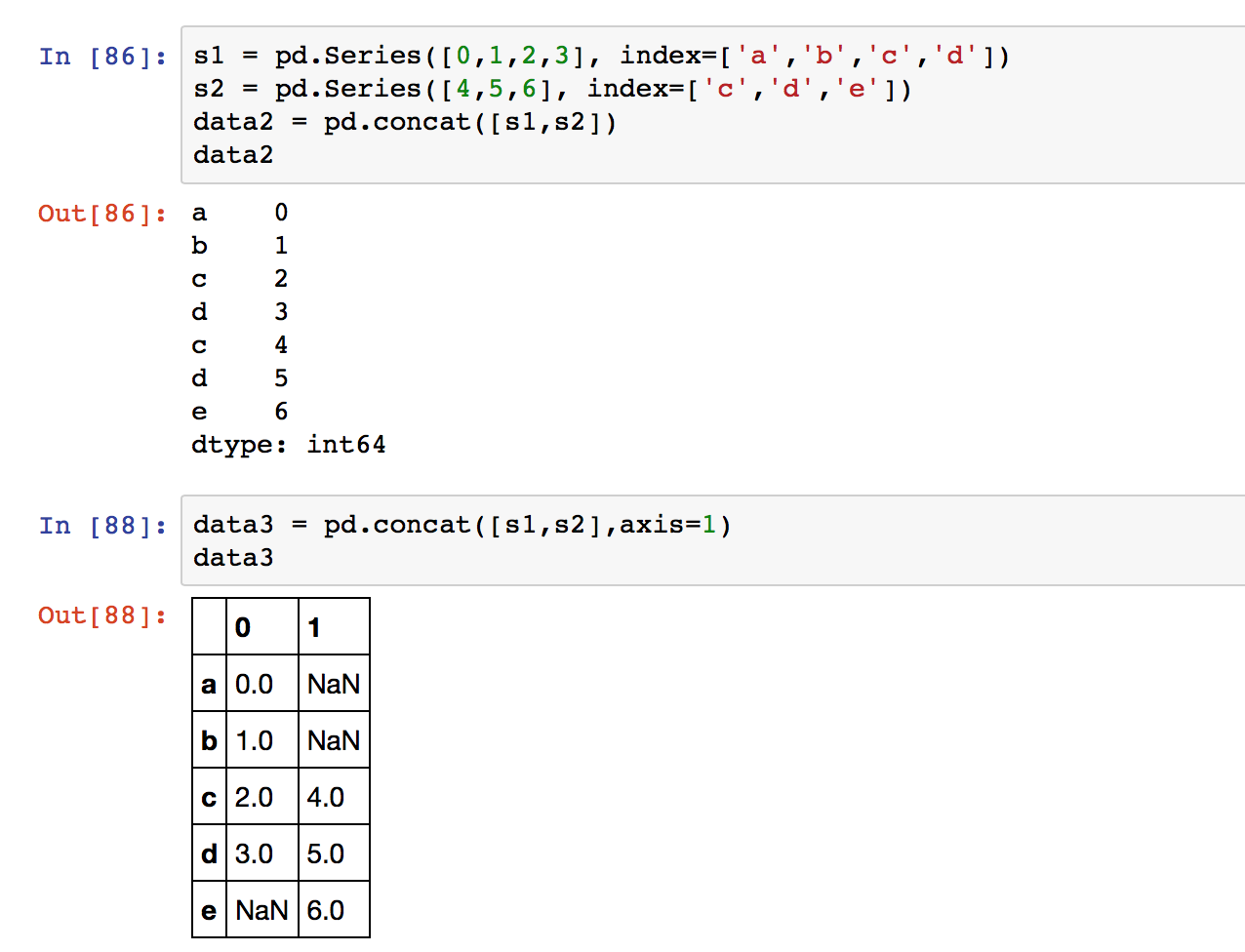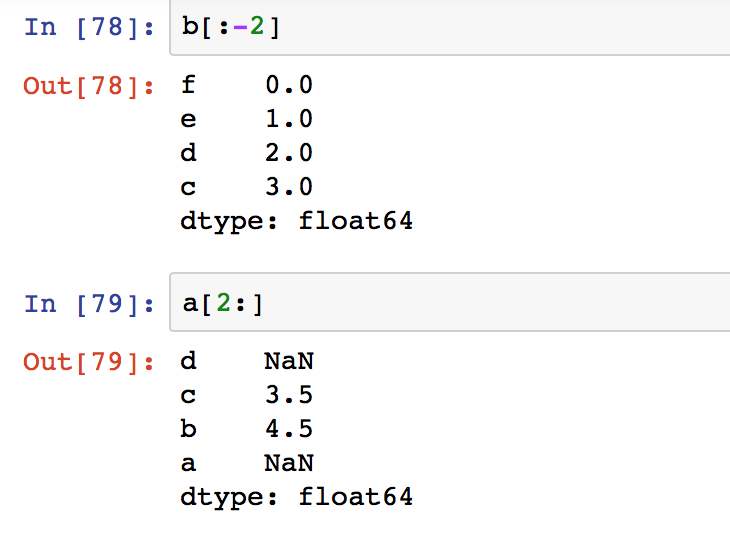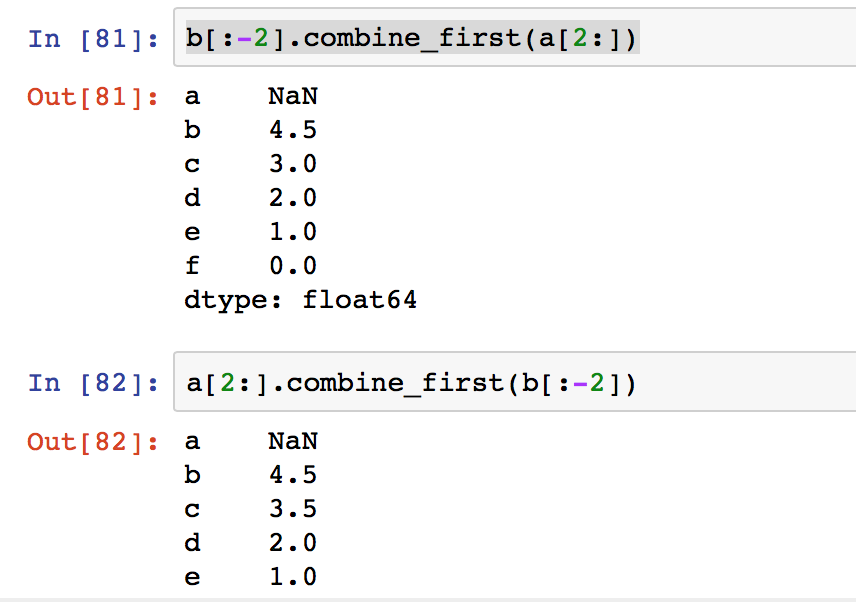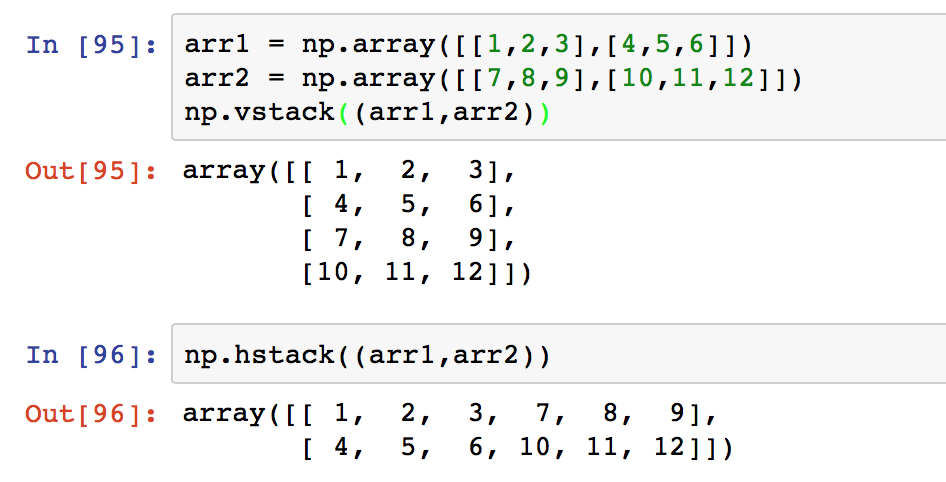本文资料来自于:
Python for Data Analysis: Chapter5, 7, 12
文中实例查看地址:http://nbviewer.jupyter.org/github/RZAmber/for_blog/blob/master/learn_numpy.ipynb
1. Combing and Merging Data Sets
在pandas中,数据可以通过三种方式进行合并。
1.1 panda.merge
通过一个或者多个key连接两个df的row。这根跟sql中的join运算类似。等复习完sql之后再来补充
1.2 pandas.concat
numpy有concatenate函数来连接两个ndarray,pandas中用concat函数,沿着轴粘连或者堆积对象

默认按照行(垂直方向)来合并,axis=1为按照列
参数说明:join:选择合并类型,inner outer等
join_axes: 规定合并的轴
keys: 建立分层索引
b[:-2]
拼接有overlapping data的对象,用其中一个boject的值补充另外一个object中的missing data


这是一个if else的关系,类似numpy.where函数。
b[:-2].combine_first(a[2:]): 解释就是如果(if) pd.isnull(b[:-2])中为Ture,就用a[2:]中的值补充,否则(else)还是使用b[:-2]的值
a[2:].combine_first(b[:-2]): 就是相反的,所以可以看到a[2:]中d的值为NaN,所以用了b[:-2]中d的值2.0。
2. Reshaping
2.1 Hierarchical indexing
了解reshaping要先了解分层索引,因为这两者经常一起使用。
分层索引可以让一个轴(axis)拥有多个index level。It provides a way for you to work with higher dimensional data in a lower dmensional form.

调取index参数的时候,名称是MultiIndex,通过这个也可以确定这个是分层索引
Hierachical indexing plays a critical role in reshaping data and group-based operations like forming a pivot table.
2.2 reshaping:用来rearrange tablular data
2.2.1 reshaping in hierarchical indexing
a: stackrotetes from the columns in the data to rows
b: unstackpivot from the rows into the col


注意:1. 默认最底层进行unstack或者stack。如果换其他level的话可以输入level number或者name
2. 默认stacking筛除missing data,加入stack(dropna=False)就可以了

3 advanced numpy
如上文所说,numpy有concatenate函数
numpy.concatenate takes a swquencc (tuple, list, etc) of array and joins them together in order along the input axis.
这经常跟stack系列函数放在一起使用来进行data的重组或者调用,但是我们常用panda.concat函数,跟numpy.concatenate一个意思
而且下列函数比numpy.concatenate更加简便
下面是一个函数列表:
stack() Join a sequence of arrays along a new axis.
hstack() Stack arrays in sequence horizontally (column wise).
vstack() Stack arrays in sequence vertically (row wise).
dstack() Stack arrays in sequence depth wise (along third dimension).
concatenate() Join a sequence of arrays along an existing axis.
vsplit () Split array into a list of multiple sub-arrays vertically.













?)

)




